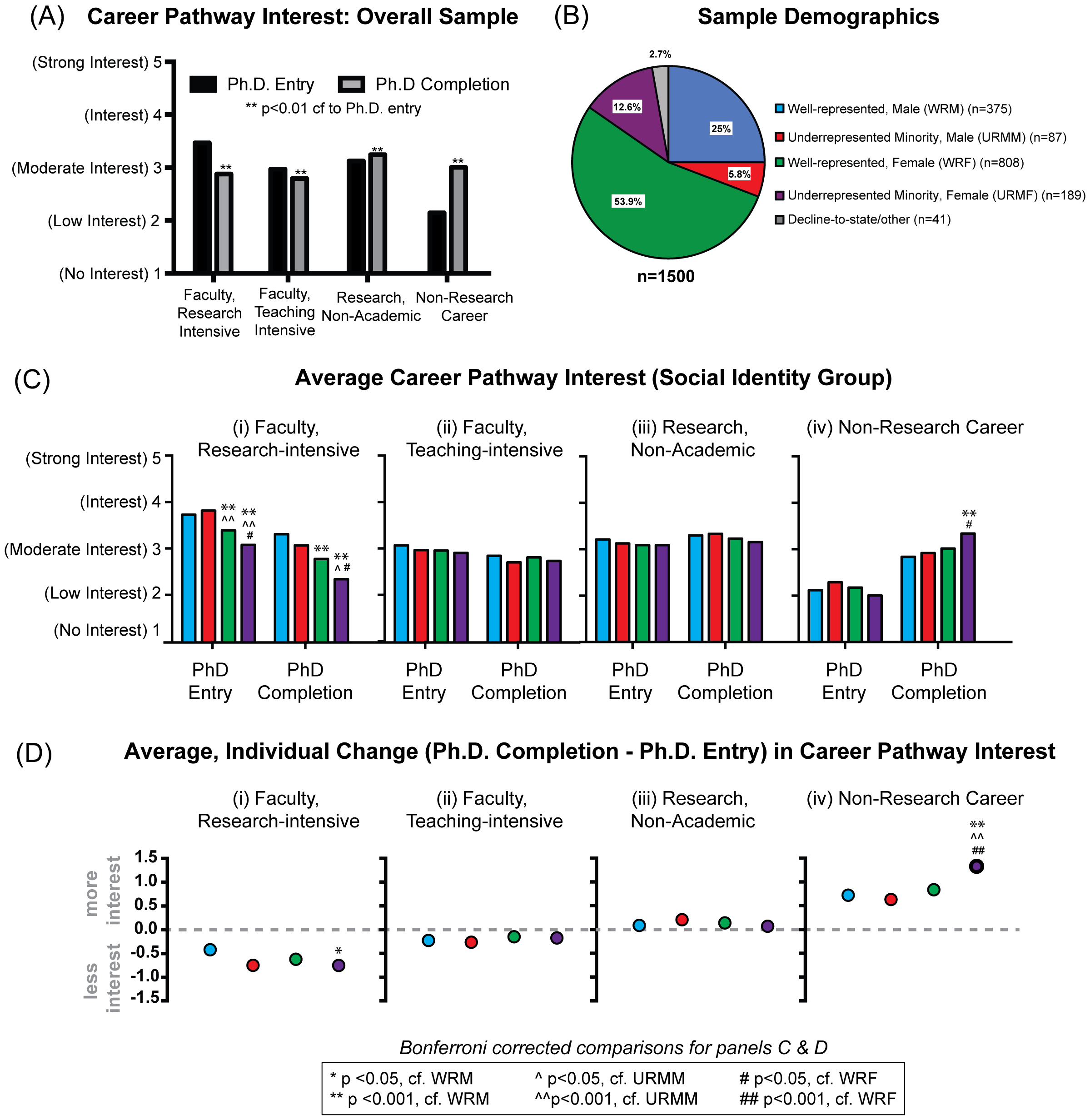You have /5 articles left.
Sign up for a free account or log in.
For decades, those committed to diversifying the faculty in biomedical fields have focused on attracting more female and minority students to the disciplines. A study published Wednesday in the journal PLOS ONE suggests that it's as much a matter of keeping such students interested in academic careers as it is attracting them in the first place.
The study found that, over the course of a doctoral education, all demographic groups moved to varying degrees away from plans for academic careers, or academic careers at research-intensive universities. But the drops in interest level from the start to end of Ph.D. were most notable for those academe is trying to recruit in order to diversify.
At the point of Ph.D. completion, after controlling for factors such as research productivity, mentoring, confidence, and so forth (all factors that could affect career choices) women and members of under-represented minority groups are 36 to 55 percent less likely than white and Asian men to report high interest in faculty careers at research-intensive universities. Furthermore, under-represented minority women are nearly twice as likely as all other groups to report high interest in careers outside of research.
The study was based on surveys of 1,500 recent Ph.D.s in the biomedical sciences, who answered questions at the beginning and end of their doctoral education. The table below shows the drops by group.
The researchers who prepared the study are now working on a follow-up in which they ask scientists why their interests shifted, and in which a particular focus will be why those who are not Asian or white men are so much more likely to move away from academic careers.
Kenneth D. Gibbs, a postdoc at the National Cancer Institute who is one of the authors of the paper, said via email that its findings should concern many in academe.
"Much of the conversation I hear about faculty/scientific workforce diversity comes down to: 'We need more [women/minorities] to finish the pipeline,' " he said. But in the biomedical sciences, women are just over half of new Ph.D.s and under-represented minority students make up 12 to 14 percent of new Ph.D.s. "We have more than an adequate supply," he said, but they aren't staying.
Gibbs said that it's time to look at the climate in departments. "The face of science has changed over the past 40 years (more women and minorities); the practices of science departments, by and large, have not," he said. "As a very practical first step, universities can have conversations on their campuses about what their students are experiencing, and then actually respond to the concerns that are raised."
The other co-authors of the paper are John McGready of Johns Hopkins University, and Jessica C. Bennett and Kimberly Griffin, both of the University of Maryland at College Park.





